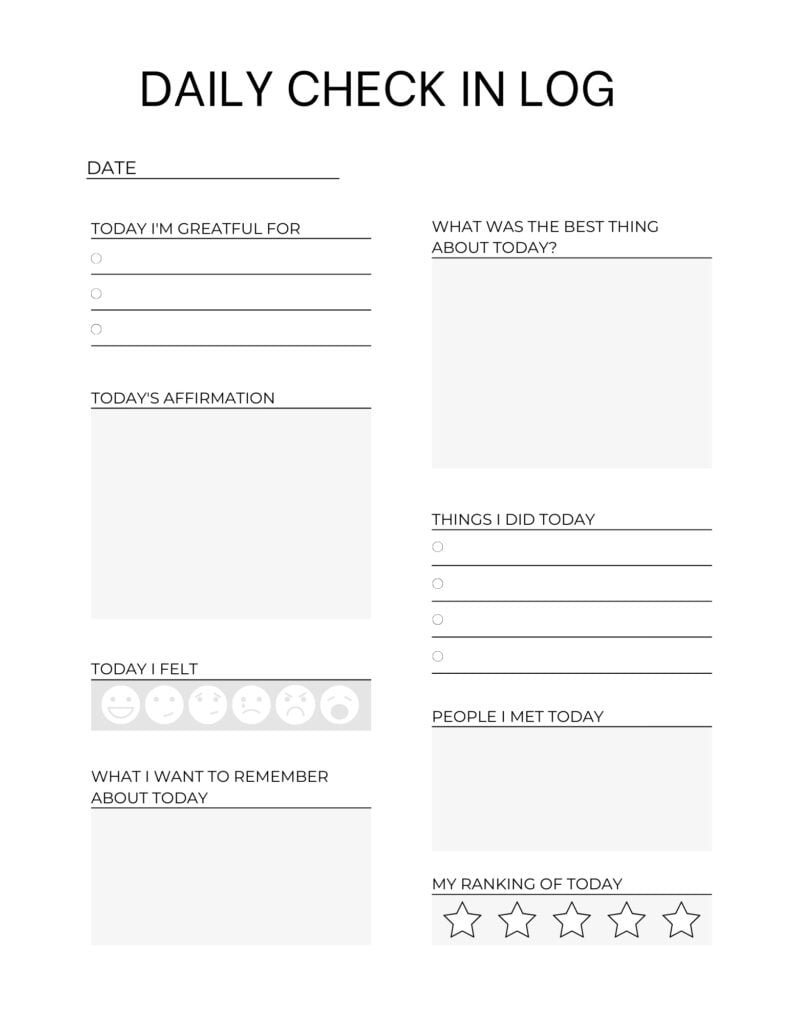The Balance: Nurturing Mind, Body, and Spirit
This post contains paid and/or affiliate links. I make a small commission at no extra cost to you. Please see our Privacy Policy.
Finding the balance between work, family, and personal life is tough. But, what if embracing a holistic wellness approach could bring you more vitality, resilience, and peace? It’s all about seeing how our mind, body, and spirit are connected.
So, what’s the secret to finding this balance? Let’s start a journey of self-discovery together. We’ll see how taking care of our mind, body, and spirit can change our well-being.
Are you ready to learn how holistic wellness can transform you?

Shop Our Journal Notebook https://liftedme.com/product-category/journals-notebooks/
Key Takeaways:
- Achieving balance among mind, body, and spirit can lead to a 30% decrease in physical ailments.
- Incorporating mindfulness practices can reduce stress by up to 14%.
- Engaging in regular physical activities can increase energy levels by 20%.
- Consuming a balanced diet rich in whole foods can boost the immune system by 25%.
- Prioritizing restorative sleep can enhance vitality by 18%.
Whole Person Wellness: The Six Dimensions
Whole person wellness looks at the mind, body, and spirit together. The Six Dimensions of Wellness give us a way to take care of our whole being.
Let’s look at each dimension and see how they help us live better.

Healthy Eating, Exercise, and Medical Care
Physical wellness means taking care of our bodies. We do this by eating well, exercising, and seeing doctors when necessary.
Eating right, staying active, and taking care of our health make us stronger.
Social Wellness: Building Supportive Relationships
Social wellness is about making strong connections with people around us. It’s about feeling like we belong and helping others feel good too.
Doing things with friends and keeping our relationships healthy helps us stay well.
Understanding and Managing Emotions
Emotional wellness is about handling our feelings well. It means finding good ways to deal with hard emotions like anger or sadness.
By being aware of our feelings and finding happiness, we can feel better emotionally.

Spiritual Wellness: Aligning Values and Actions
Spiritual wellness is about finding our purpose and feeling connected to something big. It means making sure our actions match what we believe in.
This can be through religion, thinking deeply, or exploring our spiritual side.
By focusing on the Six Dimensions of Wellness, we can take care of our whole selves. This helps us live more fully and with purpose.
The Mind-Body-Soul Connection: An Interplay of Balance
True wellness comes from balancing the mind, body, and soul. This balance is key to holistic health. By keeping these three in harmony, people find a deep sense of well-being.
Getting to Know Yourself: Mindfulness and Self-Awareness
Self-awareness starts the journey to balance. Mindfulness practices like meditation and deep breathing help people understand their thoughts and feelings better.
By living in the moment and accepting their feelings, they gain a deeper self-knowledge.
This self-knowledge lets them make choices that match their values and improve their well-being.
Balancing Mind, Body, and Soul: Nurturing Holistic Health
Keeping the Mind-Body-Soul Connection healthy means taking care of many areas. Physical health is key, with exercise, a good diet, and enough sleep. However, emotional wellness is also vital, as it helps manage stress and build strong relationships.
Lastly, spiritual alignment gives a sense of purpose and meaning. This can be through religion, nature, or thinking deeply about life.
Focusing on these areas can help people live in a state of holistic health. This balance promotes resilience, clear thinking, and a deep sense of overall well-being.
“The greatest wealth is health.” – Virgil
The journey of the Mind-Body-Soul Connection changes lives by letting people control their health fully.
People can reach their full potential through mindfulness and self-knowledge and by balancing physical, emotional, and spiritual health. This leads to a life full of energy and happiness.

The Eight Dimensions of Wellness: A Holistic Approach
Wellness is more than just being physically healthy. The Substance Abuse and Mental Health Services Administration (SAMHSA) lists eight key areas of wellness: emotional, spiritual, intellectual, physical, social, occupational, financial, and environmental.
These areas work together, and keeping them in balance is key to feeling whole.
Emotional and Spiritual Wellness: Coping and Finding Meaning
Being emotionally well means we can handle our feelings and manage them. It’s about finding ways to deal with tough times and having a purpose.
Spiritual wellness means living in line with our beliefs and values, finding peace, and feeling connected to something bigger than us.
Studies show that regular spiritual activities can lower the risk of anxiety and depression by 30%. This shows how important spiritual wellness is for our mental health.
Focusing on emotional and spiritual health can help us stay strong and positive even when things get tough.
Intellectual and Physical Wellness: Stimulation and Activity
Intellectual wellness is about seeking knowledge and thinking critically. Research says that learning new things can lower the risk of losing cognitive abilities by 15%.
This shows how important it is for our mental health.
Physical wellness means eating right, exercising, and taking care of our health. Sadly, 85% of adults don’t eat enough fruits and veggies, showing we need to work on our nutrition.
By focusing on both our minds and bodies, we can keep our brains sharp, stay physically fit, and feel better overall.
Getting to a state of wellness takes planning and effort, as our habits greatly affect our health and happiness. Changing habits can be tough but is key to a better life. It often takes many strategies, knowing ourselves, and a commitment to growing personally.

The Balance: Nurturing Mind, Body, and Spirit
Keeping a balance between the mind, body, and spirit is key to feeling whole. This part of the article talks about the need for a full approach to health.
By taking care of all parts of us, we find healing, wholeness, and deep happiness.
Ignoring any part of us can upset the balance we need to stay well. Stress in our minds can affect our bodies, leading to sickness.
On the other hand, being sick can make us feel sad and depressed. Not feeling connected spiritually can make us lose our sense of purpose.
Knowing ourselves is crucial for balance. Understanding our feelings and how our body reacts helps us make choices that help us.
Exercise is key for a healthy body, lowering stress and making us happier. Getting enough sleep helps our body heal and recharge.
Feeding our souls is just as important. Doing things that make us feel alive, like being in nature or finding purpose, lifts us.
“Nurturing the spirit can involve actions such as expressing gratitude, serving others, or finding a purpose in living, highlighting the spiritual component of holistic wellness.”
Looking after our whole health stops and treats many health issues. Mindfulness, emotional smarts, positive thoughts, and exercise help our minds.
Eating well, exercising, and sleeping right boost our immune system and health. Finding balance in mind, body, and spirit unlocks our true potential for a life full of purpose and joy.

Creating Balance: Strategies for Holistic Wellbeing
For holistic well-being, we need to balance our mind, body, and spirit. Start by reflecting on what you need and what you want. Set goals that are realistic to help you grow and stay focused.
Manage stress with mindfulness and exercise to feel calm inside. Feed your mind with new ideas, be thankful, and rest well. Eat well, drink plenty of water, and sleep well to keep your body healthy.
Find spiritual activities that match your beliefs, like meditation or spending time in nature. Adding these to your life can improve your emotional, mental, and social health.
This leads to a more balanced and happy life. Keep exploring and growing, as finding holistic well-being is a journey.
FAQ
What is the central theme of the article?
The article discusses finding balance and wellness. It focuses on taking care of the mind, body, and spirit and shows how important it is to consider well-being from a holistic perspective.
What are the six dimensions of whole-person wellness?
The National Wellness Institute’s main points are the six areas of wellness for the whole person: physical, social, emotional, and spiritual.
How are the mind, body, and soul interconnected?
The article examines how the mind, body, andher. It says keeping them in balance is key to feeling good overall. It also discusses how being aware of ourselves and practicing mindfulness help the soul work to get with this balance.
What are the eight dimensions of wellness identified by SAMHSA?
SAMHSA lists eight wellness areas, including emotional, spiritual, and physical health. The article stresses the need for balance across these areas for overall wellness.
What is the key message of the article?
The main idea is to keep the mind, body, and spirit in balance. It offers tips and steps for readers to improve their overall well-being.



